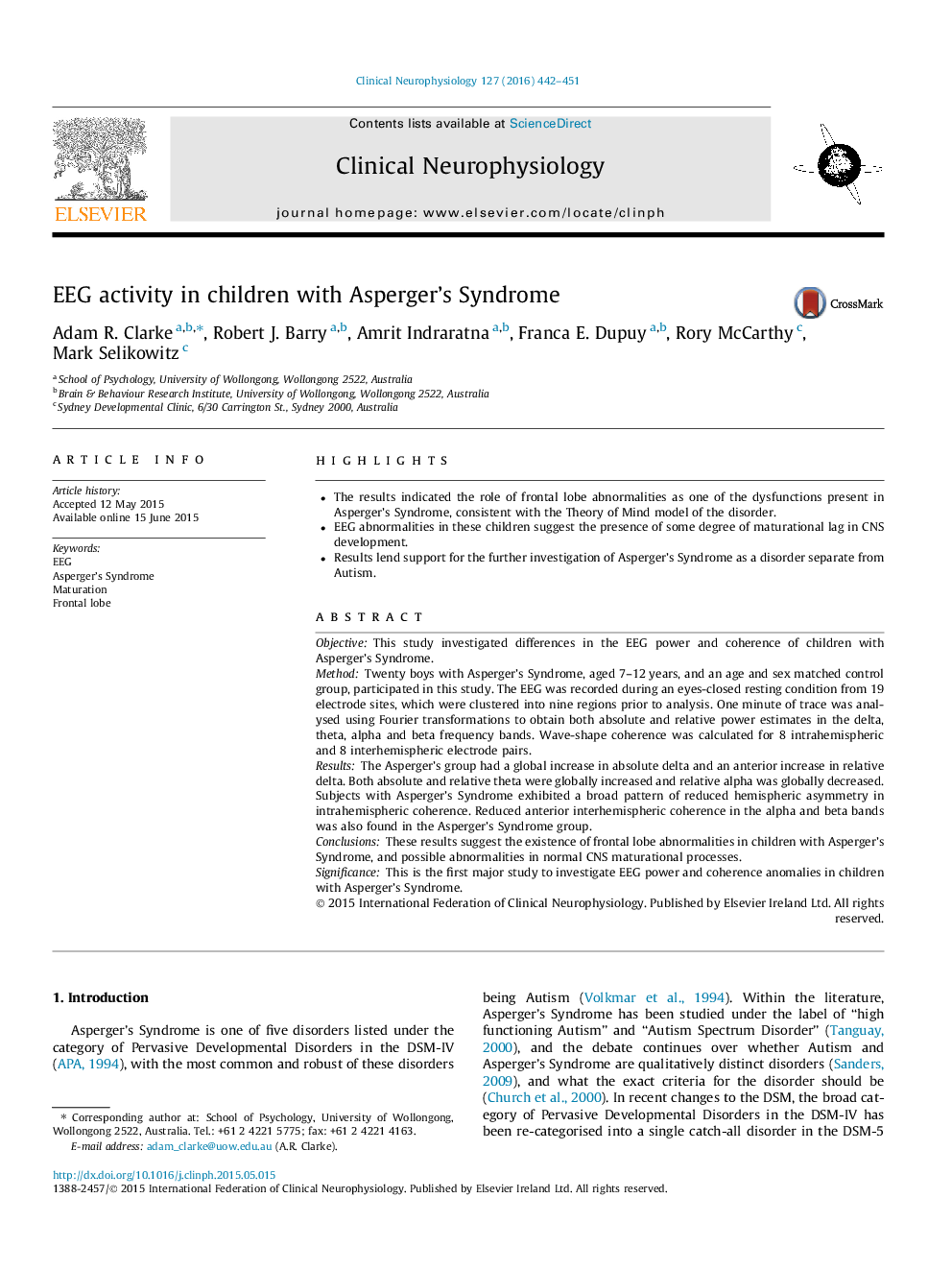| Article ID | Journal | Published Year | Pages | File Type |
|---|---|---|---|---|
| 6007899 | Clinical Neurophysiology | 2016 | 10 Pages |
â¢The results indicated the role of frontal lobe abnormalities as one of the dysfunctions present in Asperger's Syndrome, consistent with the Theory of Mind model of the disorder.â¢EEG abnormalities in these children suggest the presence of some degree of maturational lag in CNS development.â¢Results lend support for the further investigation of Asperger's Syndrome as a disorder separate from Autism.
ObjectiveThis study investigated differences in the EEG power and coherence of children with Asperger's Syndrome.MethodTwenty boys with Asperger's Syndrome, aged 7-12Â years, and an age and sex matched control group, participated in this study. The EEG was recorded during an eyes-closed resting condition from 19 electrode sites, which were clustered into nine regions prior to analysis. One minute of trace was analysed using Fourier transformations to obtain both absolute and relative power estimates in the delta, theta, alpha and beta frequency bands. Wave-shape coherence was calculated for 8 intrahemispheric and 8 interhemispheric electrode pairs.ResultsThe Asperger's group had a global increase in absolute delta and an anterior increase in relative delta. Both absolute and relative theta were globally increased and relative alpha was globally decreased. Subjects with Asperger's Syndrome exhibited a broad pattern of reduced hemispheric asymmetry in intrahemispheric coherence. Reduced anterior interhemispheric coherence in the alpha and beta bands was also found in the Asperger's Syndrome group.ConclusionsThese results suggest the existence of frontal lobe abnormalities in children with Asperger's Syndrome, and possible abnormalities in normal CNS maturational processes.SignificanceThis is the first major study to investigate EEG power and coherence anomalies in children with Asperger's Syndrome.
